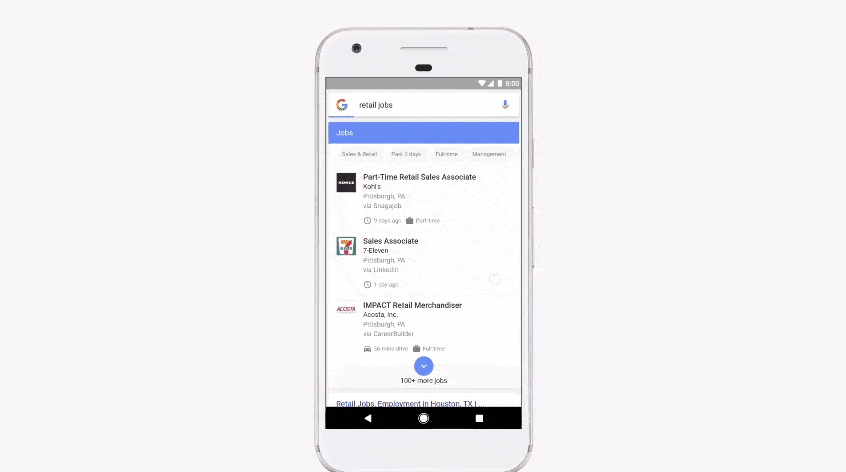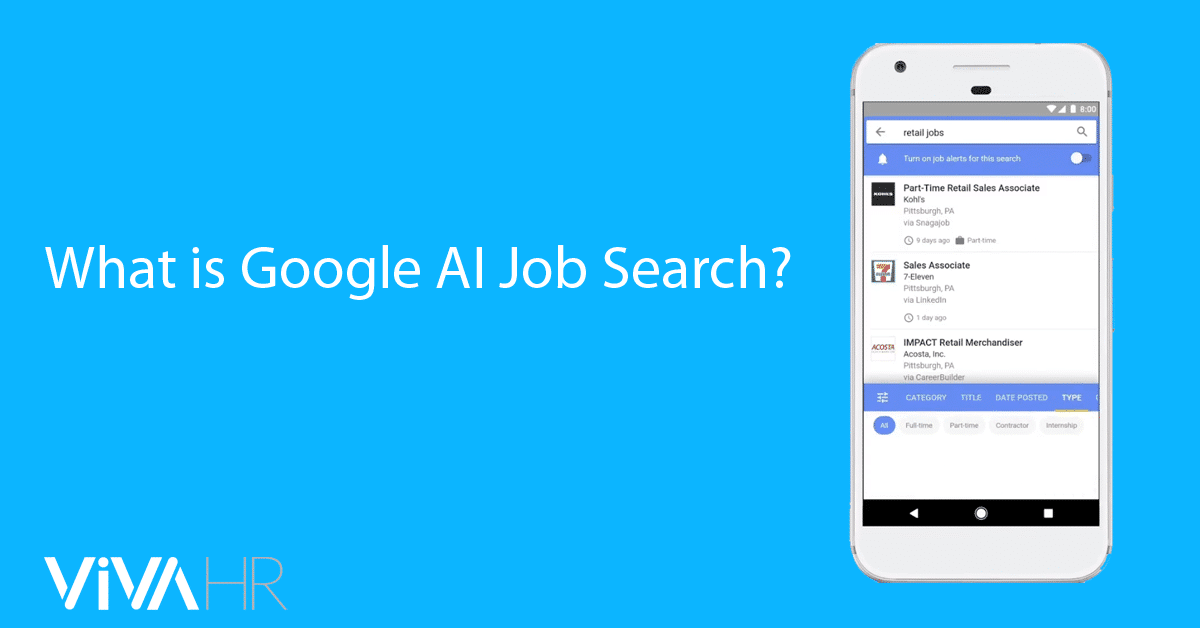What is Google AI Job Search
Recently Google announced a new a featured related to jobs inside Google Search. This is arguably the biggest news in recruitment marketing in several years. Not only is the technology going to revolutionize the convenience of searching for a job, it’s implications on how job boards operate with change forever.
What is Google AI Job Search?
The new search results are part of the “Google for Jobs” initiative at the company which aims to match job seekers with employers. Google’s mission has always been about organizing the world’s information to be universally accessible and useful. This new initiative is just their next area of focus to add to the user experience.
“With this new experience, we aim to connect Americans to job opportunities across the U.S., so no matter who you are or what kind of job you’re looking for, you can find job postings that match your needs,” Nick Zakrasek, product manager at Google, said in a blog post.
How does Google AI Job Search Work?

To create this comprehensive list, Google first has to remove all of the duplicate listings that employers post to all of these job sites. Then, its machine learning-trained algorithms sift through and categorize them. Currently, Google and many other search engines use data markup (common structure is called Schema marckup) to organize data quicker and more efficiently. Many job sites often already use at least some job-specific markup to help search engines understand that something is a job posting (though often, the kind of search engine optimization that worked when Google would only show 10 blue links for this type of query now clutters up the new interface with long, highly detailed job titles, for example).
Once the data is collected, Google’s cloud API is sifting through information found in data to personalize and adapt to your search query and filters. Overtime, Google has indicated that it will predict the perfect opportunities for you to help minimize the time to search for the best available job to the candidate.
How Do You Apply with Google AI?
As for the actual application process itself, Google doesn’t want to get in the way here and it’s not handling any of the process after you have found a job on its service. It’s worth noting that Google doesn’t try to filter jobs based on what it already knows. As Zakrasek mentioned, the fact that you like to go fishing doesn’t mean you are looking for a job on a fishing boat, after all.
The feature is pretty simple. For searches with “clear intent” (e.g., “head of catering jobs in NYC” or “entry-level jobs in DC”), Google shows a preview of job listings scraped from various sources. These sources usually have the correct data structure wrapped around the important information in the job. The information can be reported back to the user in realtime. Users can then click on results to get more information, and filter listings by criteria like location, employer, and the date of the listing.
How Do I Get My Jobs in Google AI Search Results?
The easiest way to get your jobs visible on Google Search is through an ATS which already is crawled by Google and using the correct data structure. VIVAHR‘s clients see their jobs visible on Google Jobs Search results. (Get a free account here)
If you manager you own job postings through your website, you can use the steps Google listed on their announcement blog post:
Implementation involves two steps:
- Mark up your job listings with Job Posting structured data.
- Submit a sitemap (or an RSS or Atom feed) with a date for each listing.
What does Google Job Search mean for your recruiting?
Strong visibility towards job seekers isn’t as exclusive to job boards as it once was. It’s time to think of recruiting more like recruitment marketing. Strong web presence now includes many factors, mobile responsiveness, meta data, structured data, and deep comprehensive employment content. All of these elements will increase your visibility and relevance to search engines.
A quick checklist to ensure your candidate experience is up-to-date:
- Perform a Google search with your company name + jobs (or careers). Identify the top 5 results for accuracy.
- Visit your careers page from multiple browsers including mobile browsers. Apply to a sampling of jobs from each browser and operating system. Oftentimes different browsers can have a very different user experience. Check for responsiveness.
- If you have automated emails, test with different type of email providers (gmail and yahoo are the two most popular for job seekers) to see if they land in your inbox vs spam.
- Time yourself through the apply process. If you have a poor candidate conversion rate, chances are your application process takes longer that 7 minutes. Might be worth eliminating some steps to speed up the process.
- Look for your brand on social media platforms. Is the content old, outdated? Are you talking about your company culture?
This post was recently featured on VIVAHR.com. To read more content by Ryan Naylor, be sure to follow on Twitter @rdnaylor
Subscribe
All the recruiting news you see here, delivered straight to your inbox.
Just enter your e-mail address below
RecruitingBlogs on Twitter
Groups
-
Recruiters On LinkedIn
1801 members
-
Corporate Recruiters
316 members
-
Recruiting tips for begi…
180 members
-
The Recruiting Bar
190 members
-
Recruiting Humor
222 members
-
News from the Recruiting…
34 members
-
Contractors Recruitment
62 members
-
Recruitment Process Outs…
194 members
-
Virtual Recruiters Netwo…
619 members
-
Independent Recruiters
530 members
© 2024 All Rights Reserved
Powered by
![]()
Badges | Report an Issue | Privacy Policy | Terms of Service
About
With over 100K strong in our network, RecruitingBlogs.com is part of the RecruitingDaily.com, LLC family of Recruiting and HR communities.
Our goal is to provide information that is meaningful. Without compromise, our community comes first.
Join the Network!
RecruitingDaily.com
One Reservoir Corporate Drive
4 Research Drive – Suite 402
Shelton, CT 06484
Email us: info@recruitingdaily.com


You need to be a member of RecruitingBlogs to add comments!
Join RecruitingBlogs